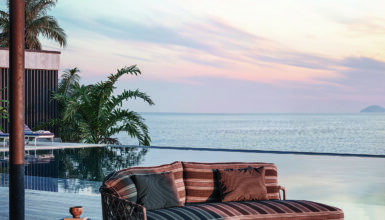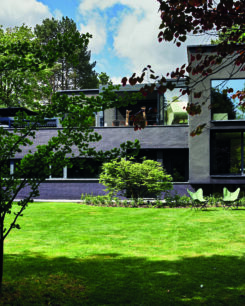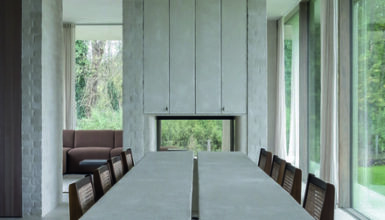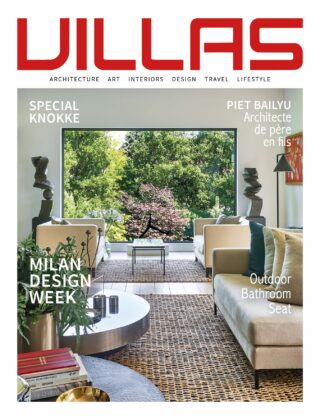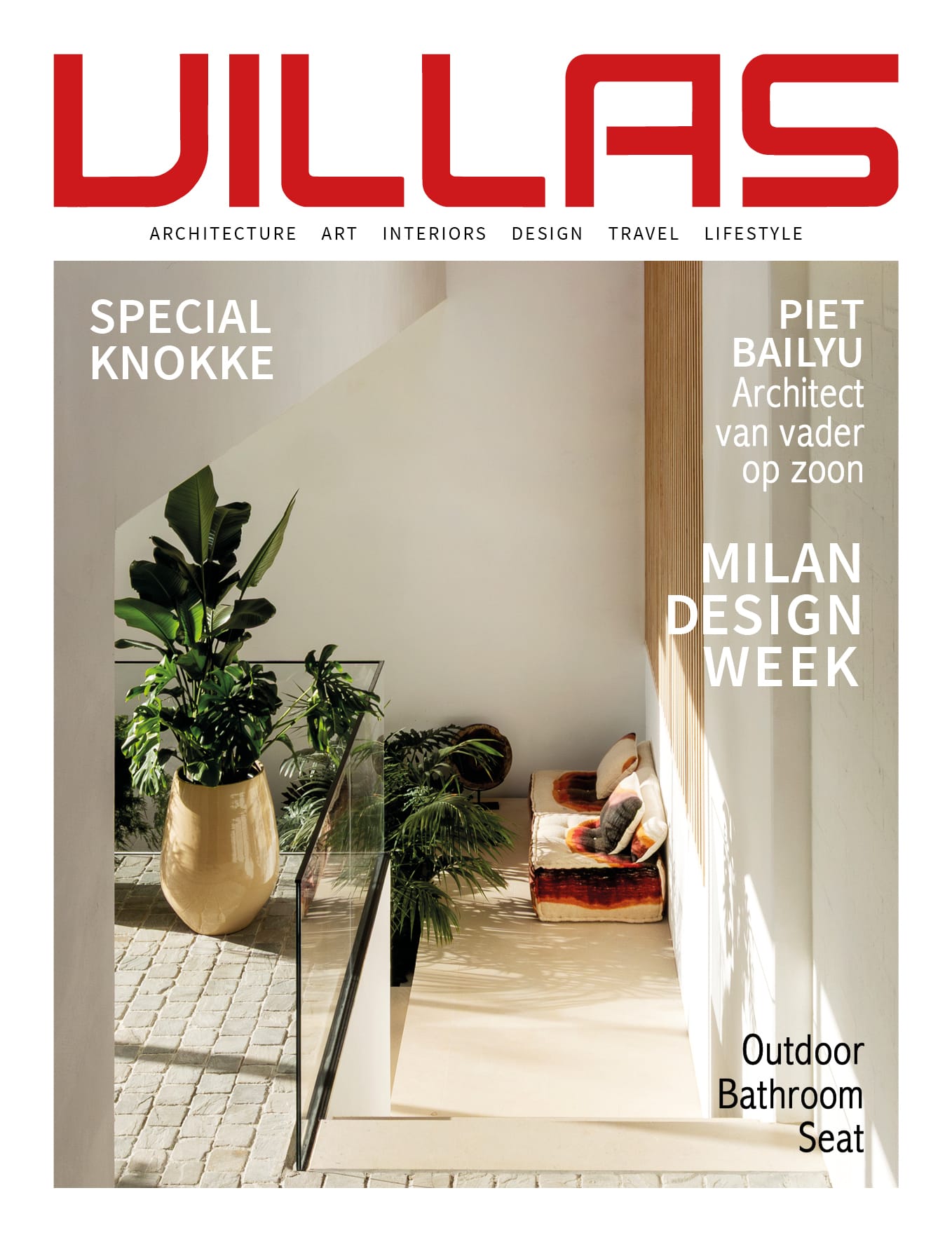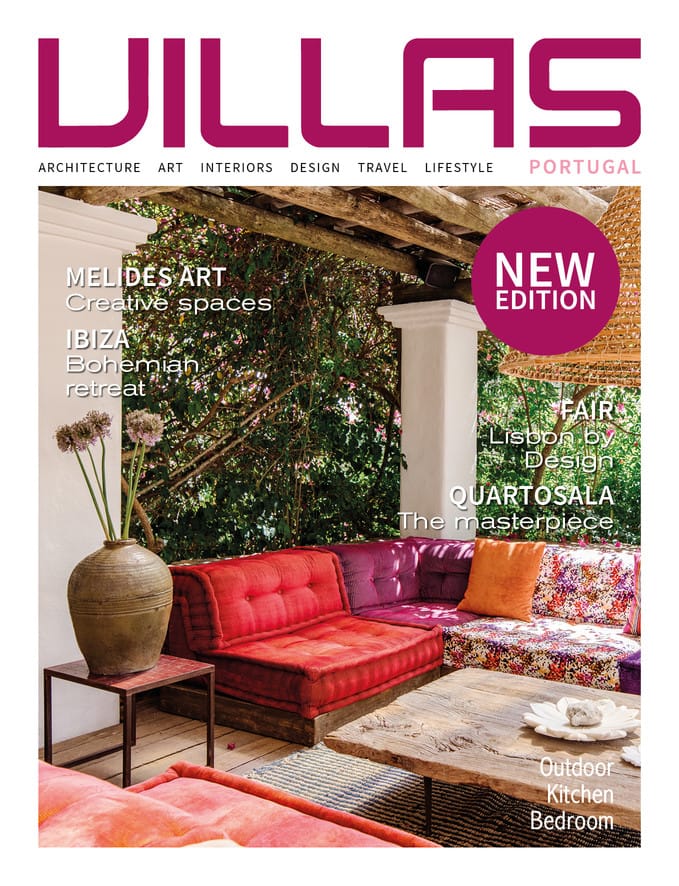Raw or refined, metallic or transparent, solid or primitive, the materials refer to minerality, astral visions, celestial and stellar expanses. Their intensity is matched by random, organic shapes, irregular curves, and imperfections that make each object unique. Even when produced en masse, the creations stand out as imitations of the human hand and craftsmanship. From the vibrant halos of Space Age and Sixties revival lighting to the poetry of a futuristic dream world, the trends point to a fantasized future that we want to bring to life in a contemporary way, in line with sustainable development and new environmental goals that show greater respect for our planet.
In terms of color, the trend is pastel shades, powder pink combined with terracotta hues such as brick, rust, and oxidation effects, and accents of burgundy. Heavenly blue is featured in cameos, with shades ranging from the lightest to the darkest. Greens go well with blue, beige, and other neutral colors. Ochre yellow can be combined with the entire palette.
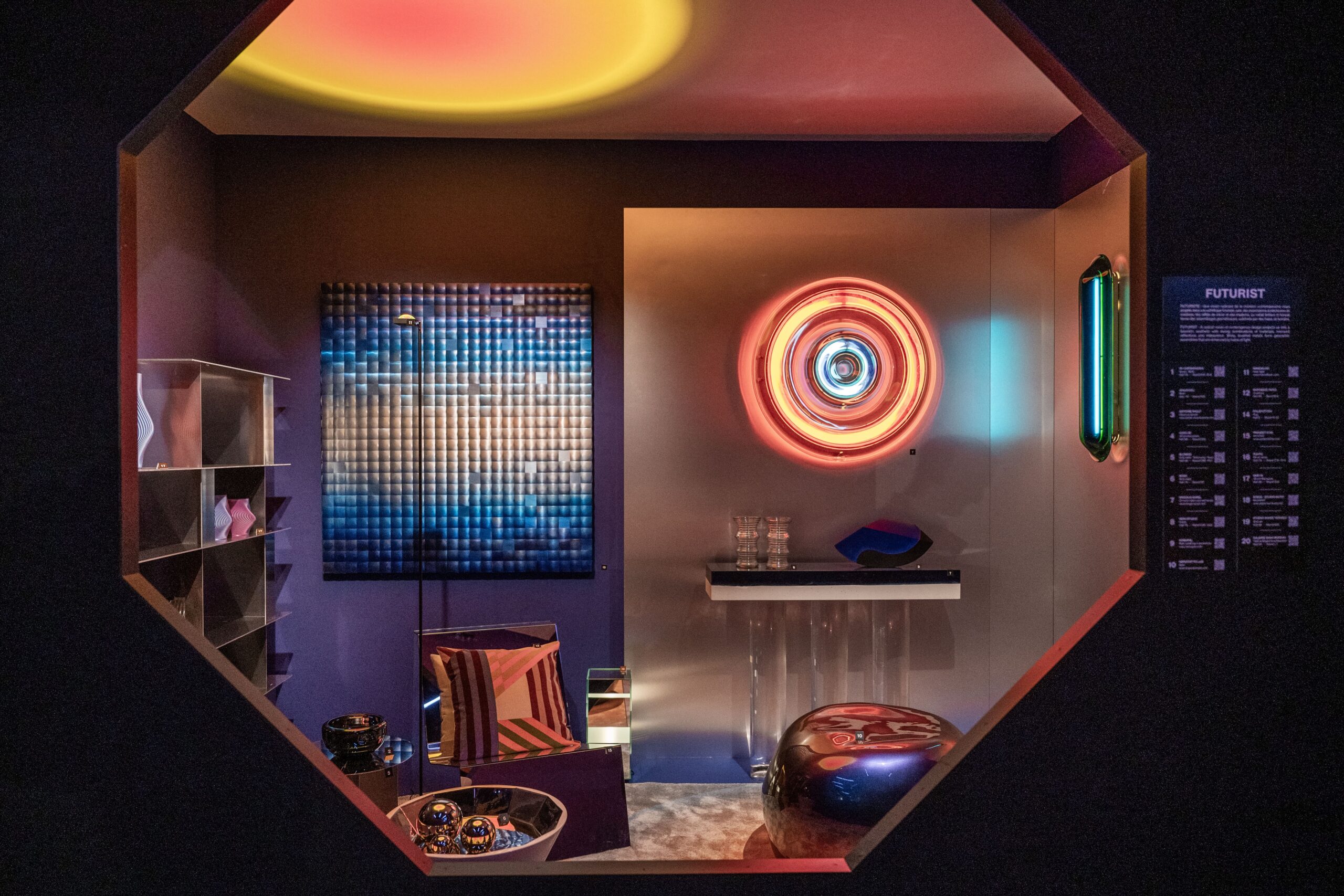
What’s New Décor, Terra Cosmos space – Elizabeth Leriche. © Anne-Emmanuelle Thion
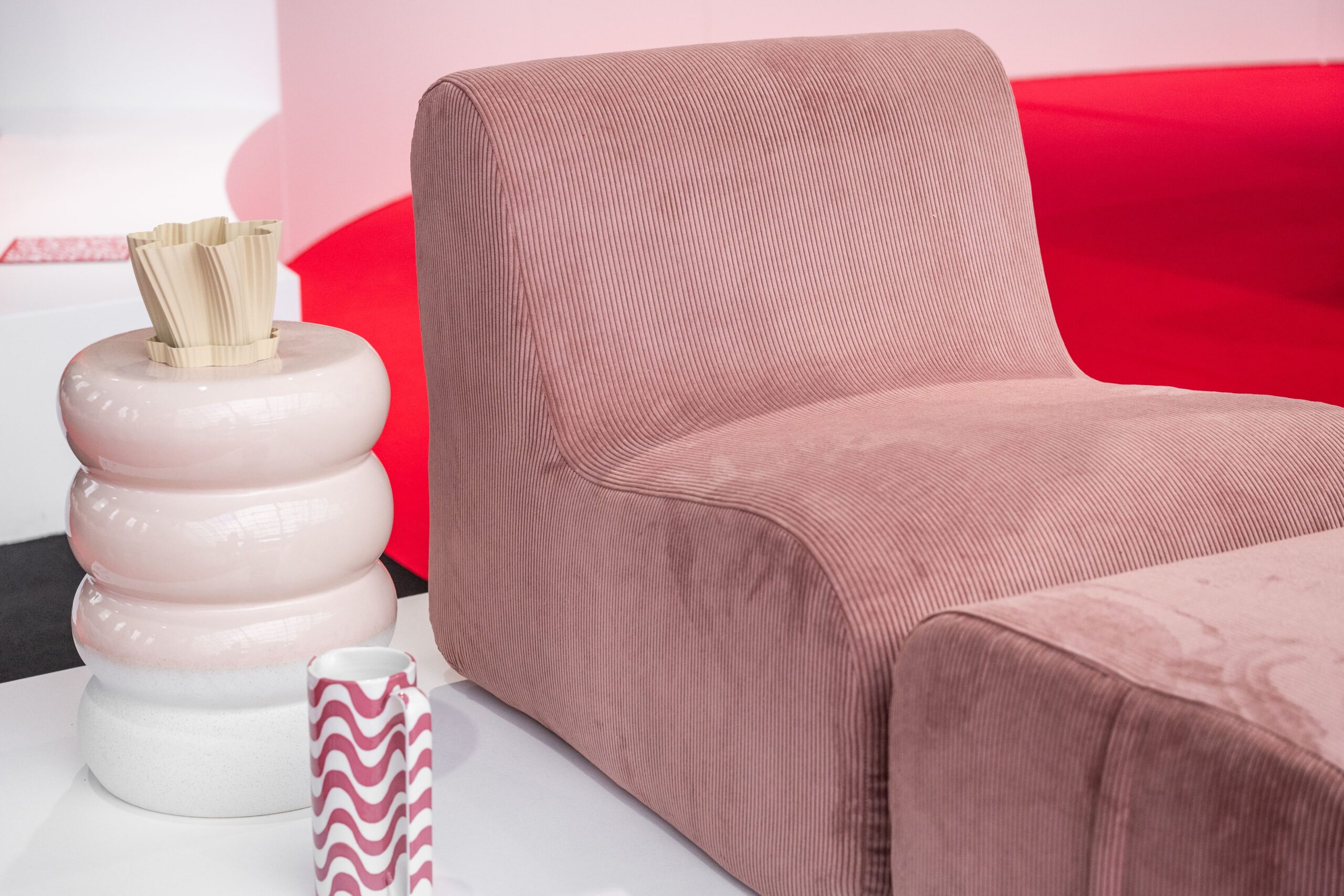
MOM Village, color trends. © Anne-Emmanuelle Thion
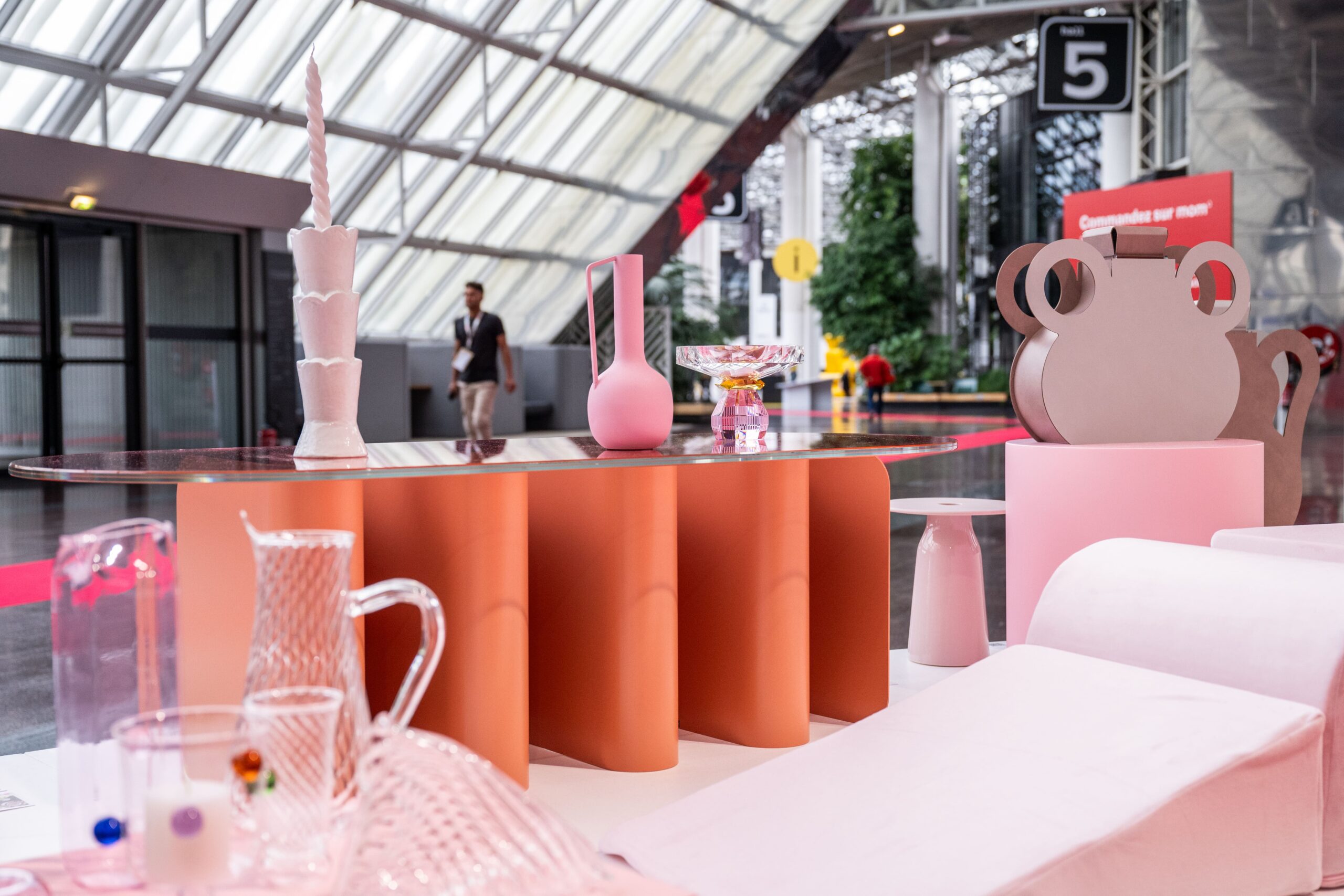
MOM Village, color trends. © Anne-Emmanuelle Thion
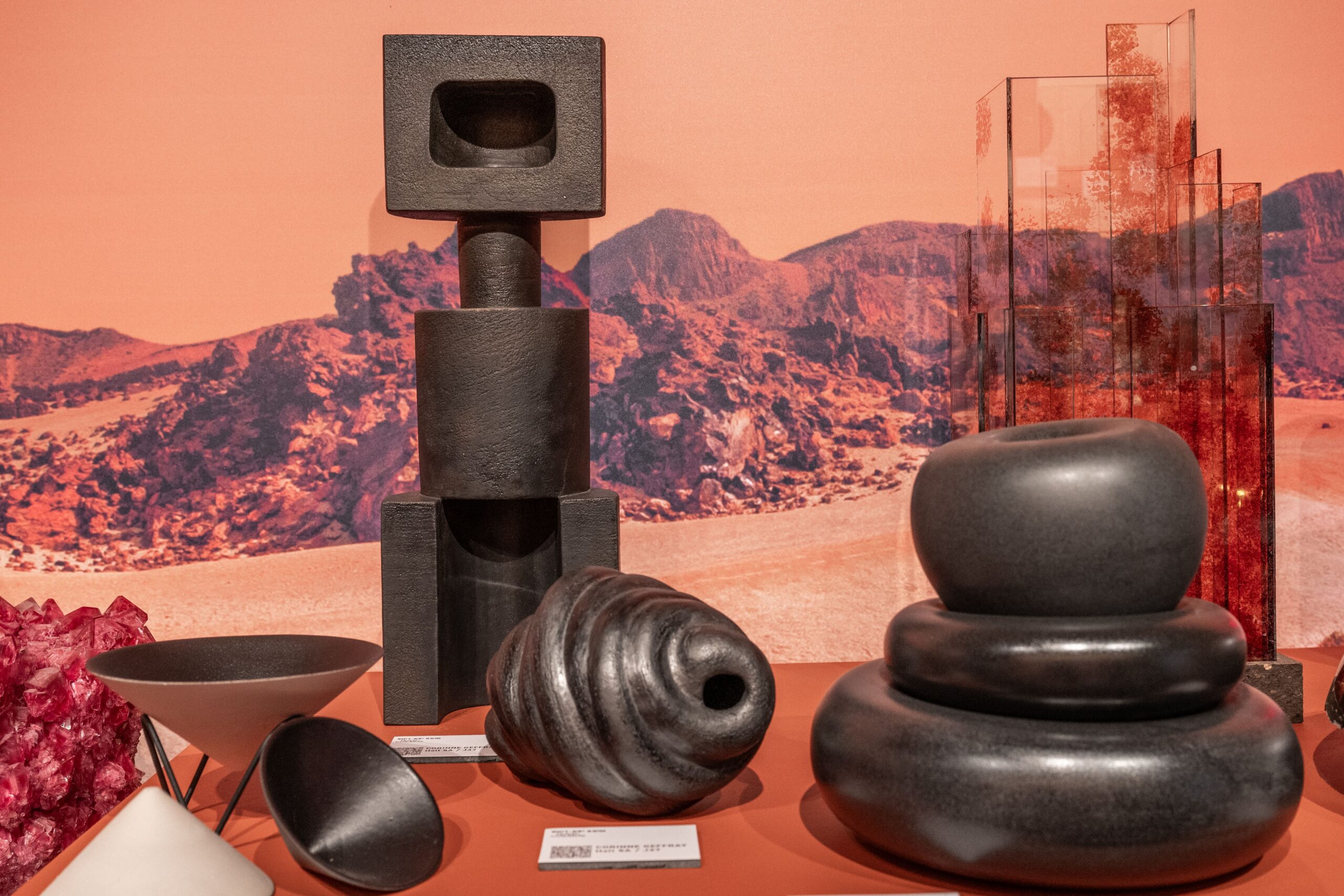
What’s New Retail. © Anne-Emmanuelle Thion
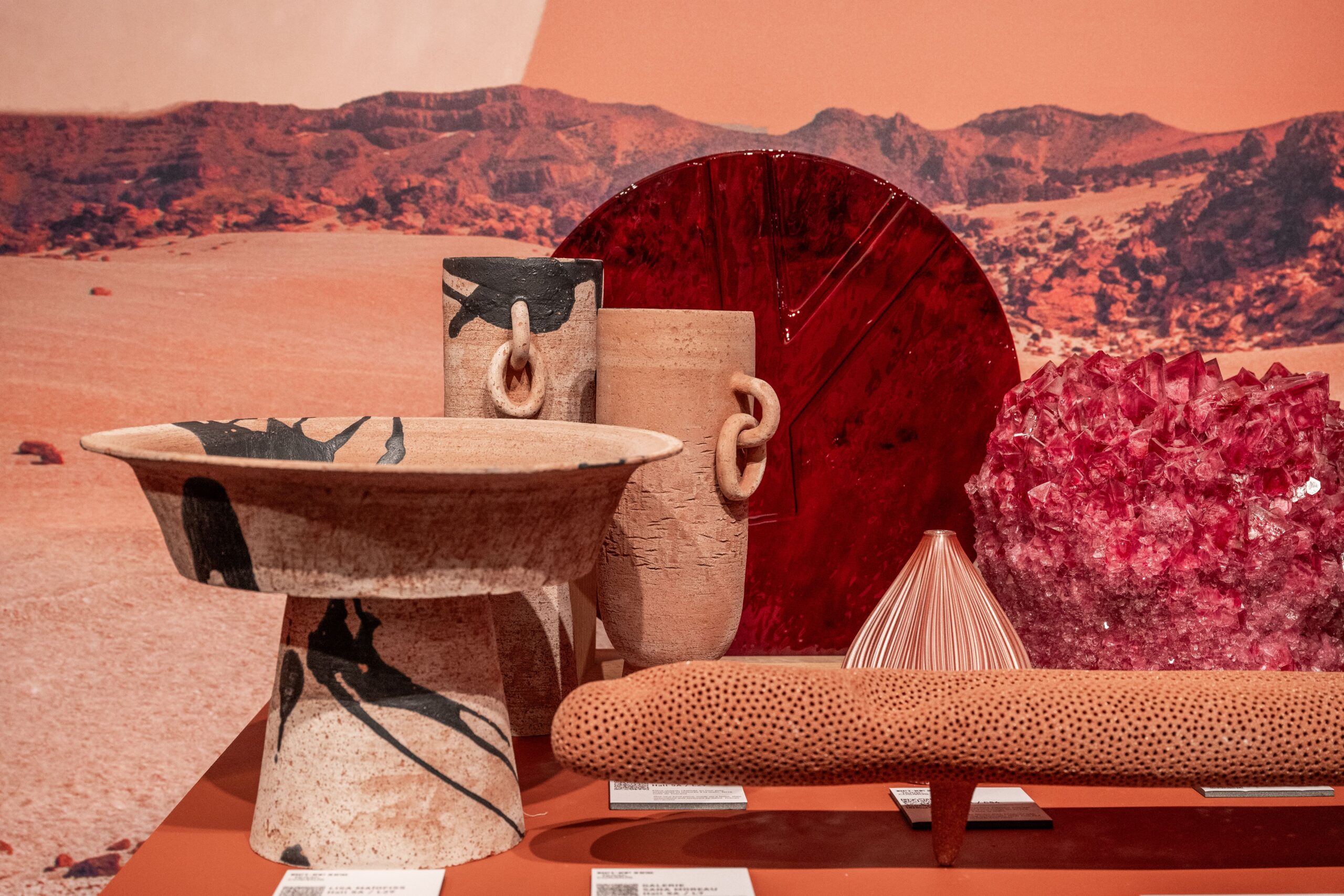
What’s New Retail. © Anne-Emmanuelle Thion
Designers Keeping Up with the Times
In a forward-thinking spirit, the 5th edition of Future on Stage, a real springboard for emerging talent, concretely shapes an idea for greener products. The Sungai Design collective (sungaidesign.com) has developed a series of furniture made from plastic extracted from Balinese rivers, demonstrating a genuine concern for the environment. The baths adorned with artworks by Konqrit (konqrit.com), celebrate the fusion of art and industry to create personalized living spaces. With wheelchairs made from okoume wood or pieces of charred beams from the Notre-Dame Cathedral in Paris, Apollo (apollo.fr) focuses on objects that designers still need to contemplate. Designer Paul de Livron has perfected the only technique that makes it possible to use wood in production and forget about the medical aspect. All these creations are not just objects but reveal an original approach and a way to evolve the world of design.
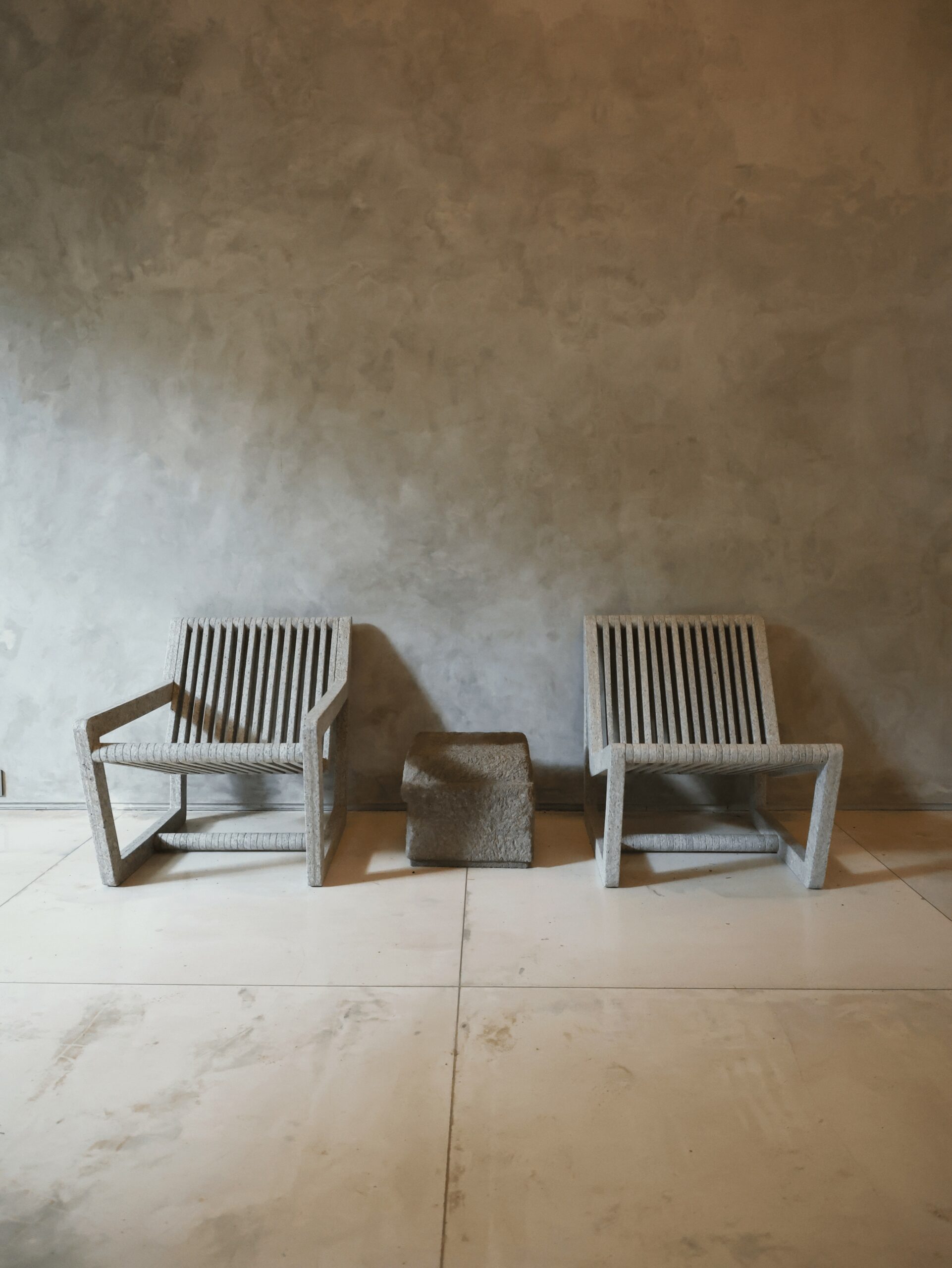
Ombak Chair – Sungai Design
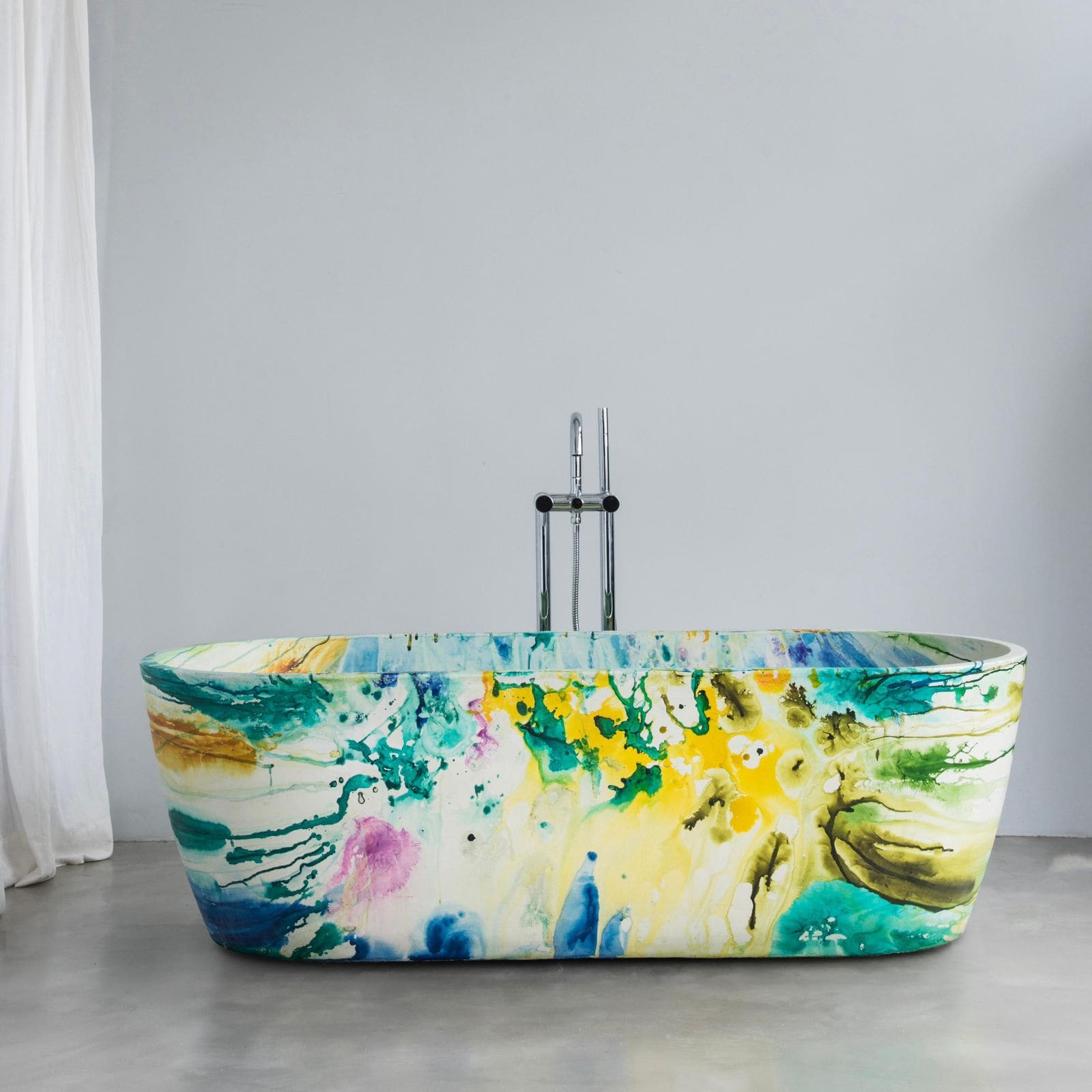
Custom-made bath – Martin Reyna. © Pompi Gutnisky for Konqrit
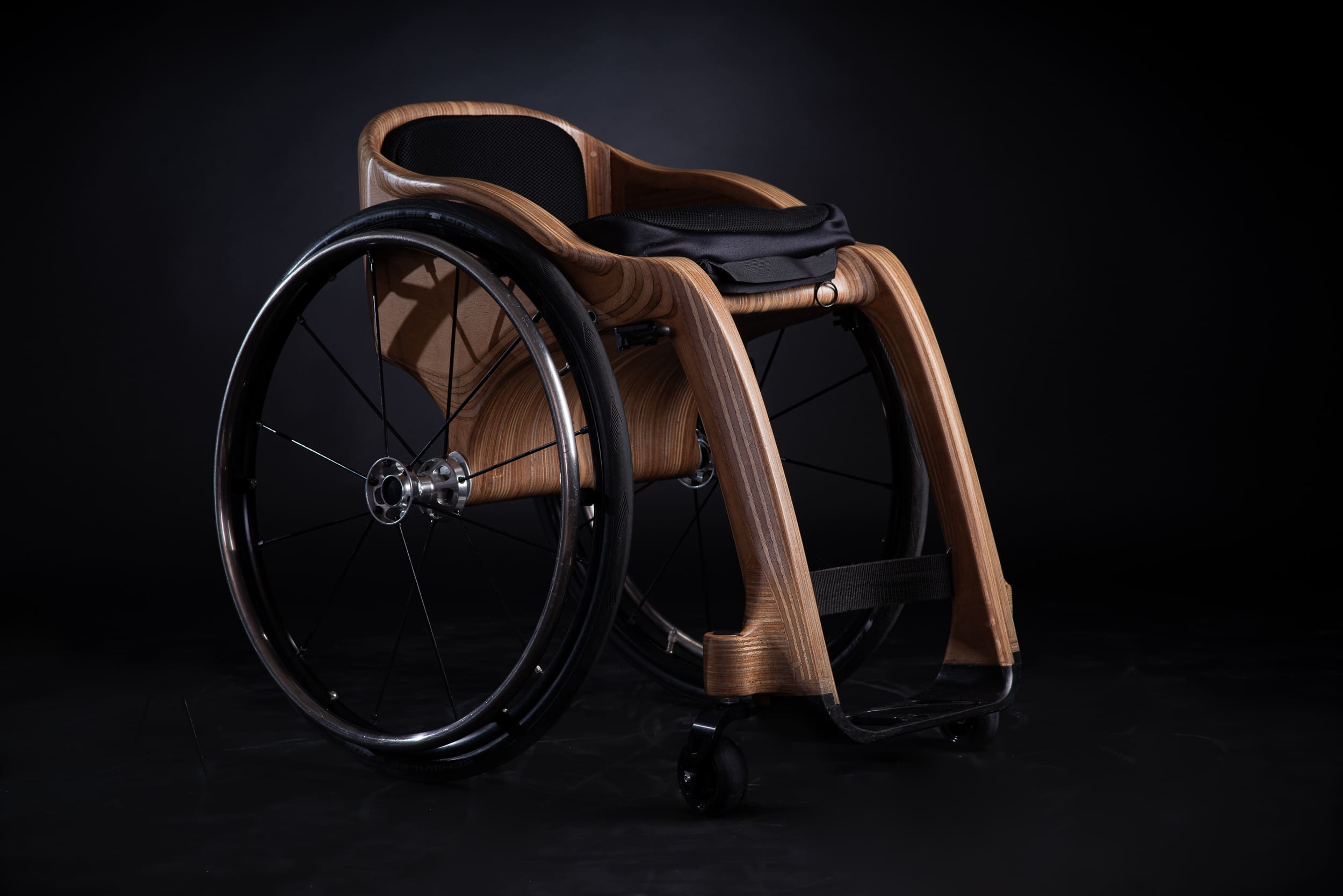
Apollo Wheelchair. © Michel Richard
Sensitive Creations
The exhibitors at the Rising Talents Awards are no exception to this trend. Among the selected designers from Scandinavian countries is Finnish designer Antrei Hartikainen (antreihartikainen.fi) whose creations combine craftsmanship and technology. His Melt and Traces tables, made with a CNC robot arm that mimics handwork, have an original texture derived from a new mass production technique. Each unique piece then receives a very specific finish. The Icelandic female duo Flétta (studiofletta.is) gives a second life to materials. Their cushions are made from old airbags and the lamp shades on their lamps are made from trophies or recycled aluminum plates originally used in offset printing. Wool, textiles, wood, glass: these designers use many waste materials, especially from the fishing industry, such as nets.
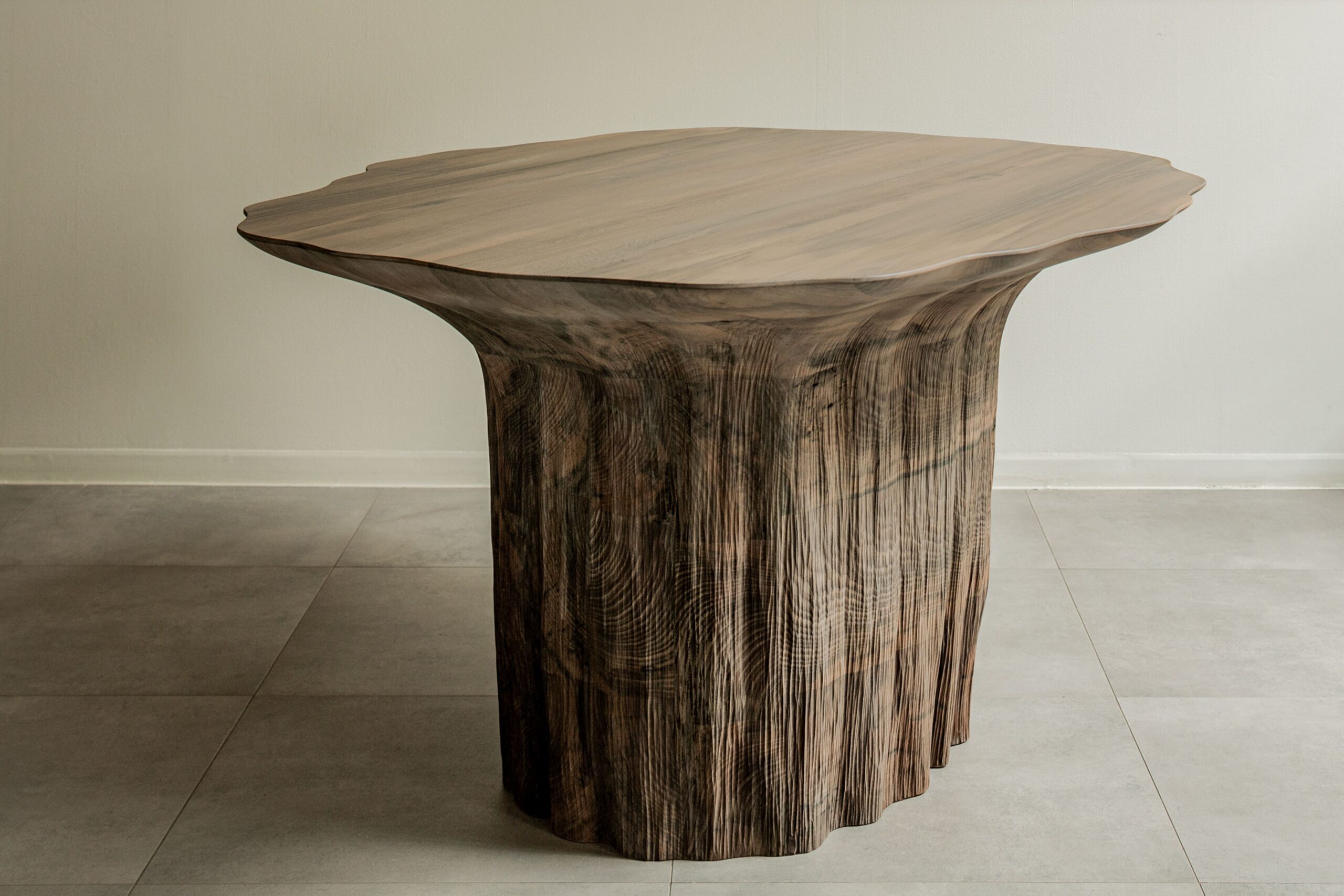
Traces Tables – Antrei Hartikainen. © Katja Hagelstam

CMJN Lamps, Flétta. Photo: © Anne-Emmanuelle Thion
Belgian Designer of the Year
Designer Lionel Jadot (lioneljadot.com), named Designer of the Year 2024 by Maison&Objet, has created a hospitality space reflecting his deep interest in reused materials. He was assisted by residents of Zaventem Ateliers, just outside Brussels. Together, they conceived and furnished a room, like a hotel suite, to showcase the wealth of expertise of all these artists. Made from waste materials such as eggplant skins, roots or second-hand textiles (La Gadoue Atelier, lagadoueatelier.com), the used materials challenged many visitors. The designers are perfectly in tune with the spirit of recycling, which is no longer a marginal or anecdotal activity. The artists and collaborators from Zaventem Ateliers illustrated the philosophy of hospitality in a radical and experimental way and also explored new techniques for processing materials. The glowing suspensions made from pig intestines are magical. They use transparency to create a delicate light effect, with a spherical diffuser that inflates and deflates like a living creation. The coffee table by Bento Architecture (bento.archi)is surprising: on the beech wood base, a mushroom cap has been cultivated. The mycelium went through a special oven that neutralized bacteria and made the material very hard. The bedroom and living room were sheltered under a dome inspired by the Kogetsudai, a thousand-year-old sand grain built near Kyoto, with fresco-style decor made from 100% recycled papier-mâché (@papier.boulettes). The bathroom walls, designed by Portuguese designer Mircea Anghel (mirceaanghel.com), are clad in panels made from recycled plastic (Bel Albatros, belalbatros.com).

What’s New Hospitality Space, designed by Lionel Jadot with Zaventem Ateliers. © Anne-Emmanuelle Thion

What’s New Hospitality Space, designed by Lionel Jadot and Mircea Anghel with Zaventem Ateliers. © Anne-Emmanuelle Thion
New Practices and Techniques
Parquet that mimics burned wood (CarréSol Editions, carresol-parquet.com), terrazzo with more organic designs, natural lime plaster with three possible finishes (Terrae chez Ideal Work, idealwork.fr), finishing materials are also evolving. A stand dedicated to eco-materials was focused on experiments with new materials based on recycling natural waste: panels made from oyster shells by Ostrea (ostreadesign.com), objects based on recycled shells, manufactured using a low-tech process in small, medium, or large series by Malakio (malakio.com), biobased raw materials and recyclable non-woven materials with acoustic and thermal qualities based on mussel glue, Byscoplak, and Byscoflex by Bysco (bysco.fr), and badminton shuttles by Compo’plume (compoplume.fr). The materials are transformed into panels or tiles to create furniture or vertical and horizontal surfaces for floors and walls. Adaozan (adaozan.fr), from Brittany recycles apple waste from cider production and turns it into a cork-like material. Pierreplume (pierreplume.fr) has developed insulation materials from textiles collected in France and Belgium, with an aesthetic appeal making them ideal for visible installation on walls or for use in furniture such as shelves. And the brand Vescom (vescom.com) produces durable structured wall coverings. For a decorative approach, various sizes and colors are available. Designer James Haywood (jameshaywood.me), has developed a mineral resin that is a 100% natural alternative to conventional cement, which is highly polluting and extremely durable.
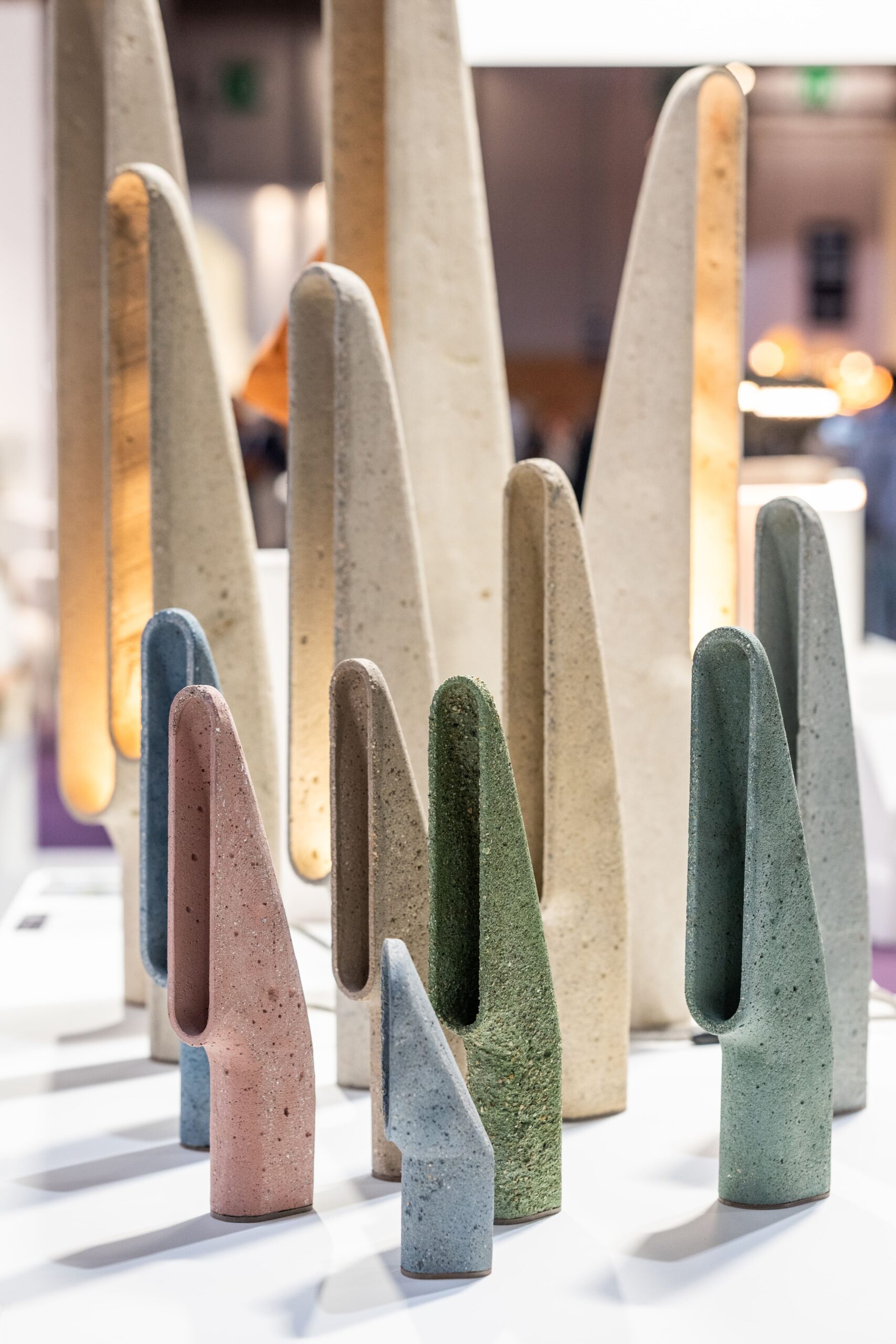
Erreur 40S Slender Fixtures – James Haywood. © Anne-Emmanuelle Thion
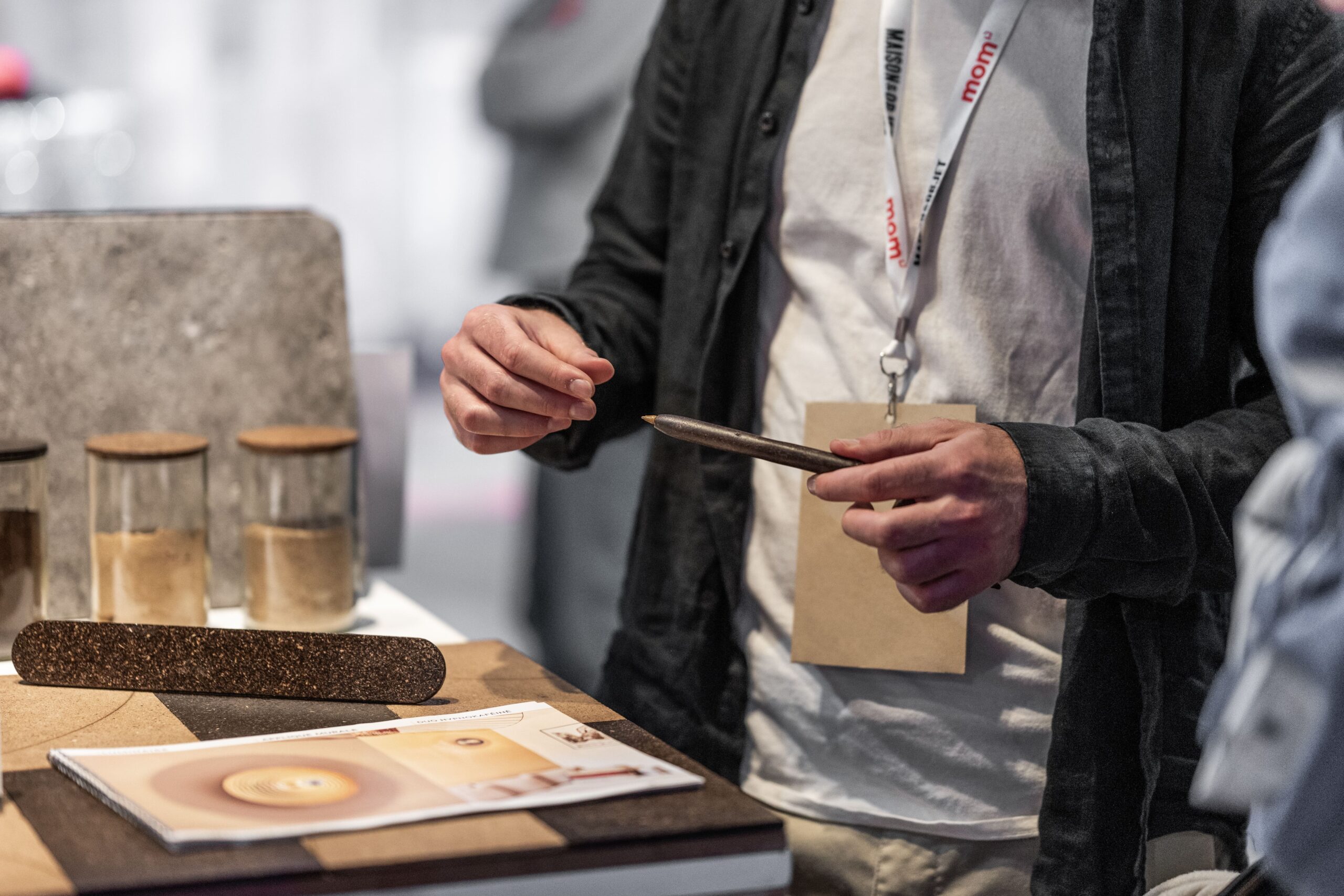
Eco-materials Space. © Anne-Emmanuelle Thion
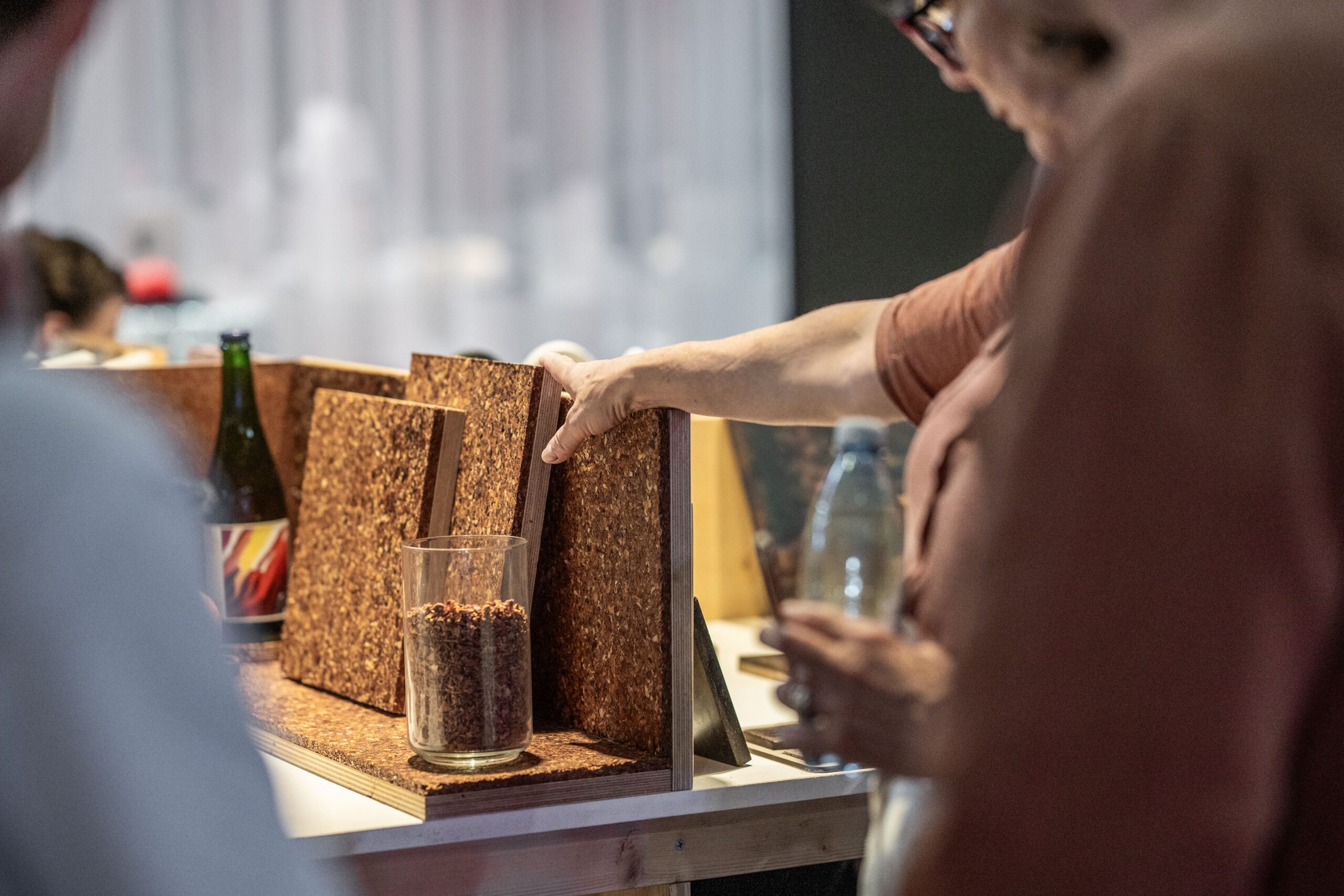
Eco-materials Space. © Anne-Emmanuelle Thion

Eco-materials Space. © Anne-Emmanuelle Thion
